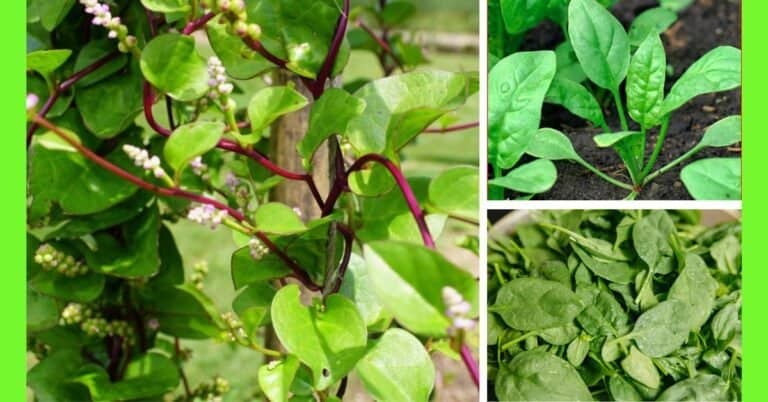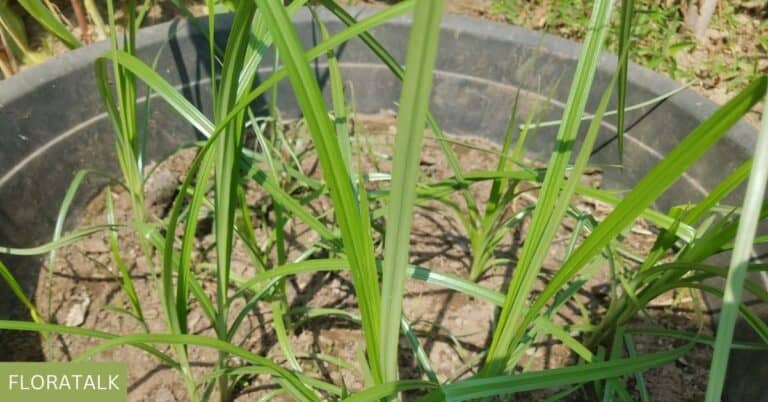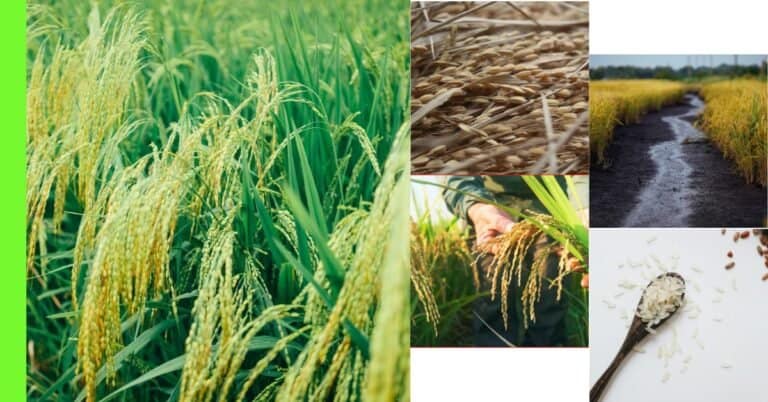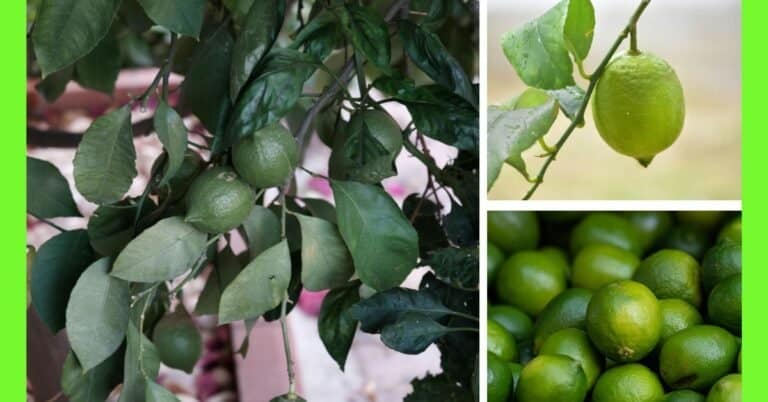Planting Sugarcane: Learn How To Plant Sugarcane
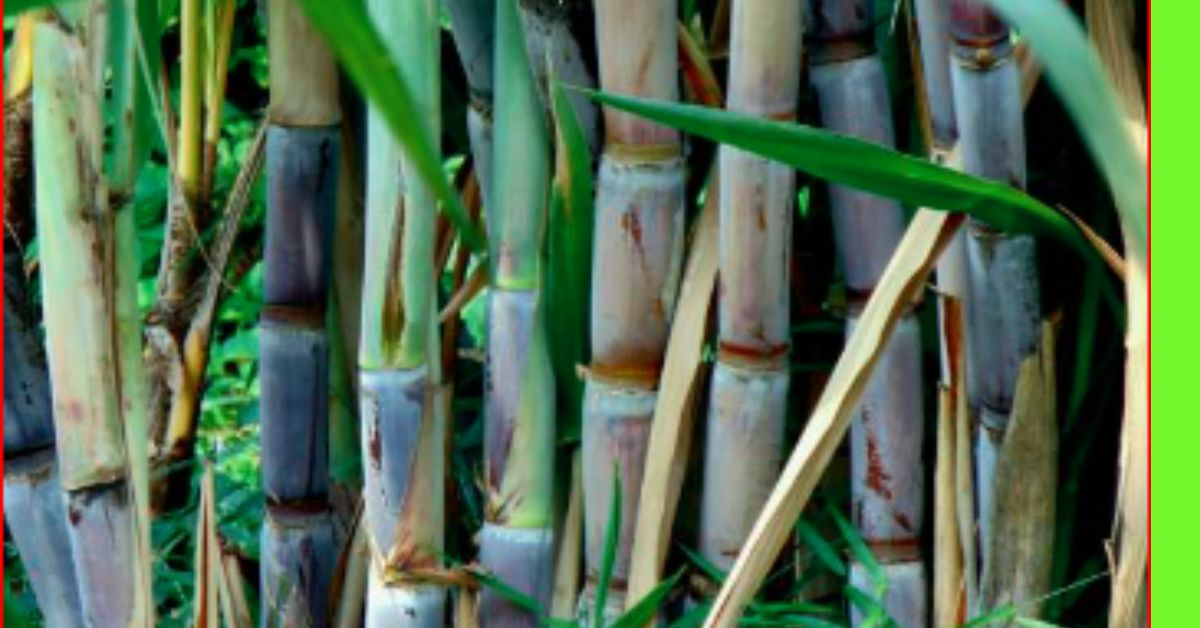
Sugarcane, or Saccharum officinarum, is a tall perennial grass family Poaceae species.
It is one of the globe’s most significant sources of sugar production.
This article is bent on showing you how to grow your own Sugarcane on your farm or garden.
Let us get to business.
Description of the Plant
Sugarcane plants usually grow 6 ft (1.8 m)—20 ft (6 m) tall, depending on the species and growth conditions.
The stem is the part harvested for the consumption and production of sugar.
It is thick and has a jointed stalk.
The stem can be green, yellow or purple.
It has lots of nodes and internodes.
They are fibrous and filled with sweet juice that is rich in sucrose.
The leaves are often sharp-edged and range from 2 ft (60 cm) to 3 ft (90 cm) in length, with parallel veins running the size of the leaf.
Sugarcane has long, narrow, and sword-shaped leaves that grow alternately from the stalk nodes.
The flowers appear late in the growth cycle and are rarely seen when grown commercially in sugarcane farms since they are typically harvested before flowering.
The sugarcane plant produces small, white to purple flowers arranged in large, fluffy panicles, typically appearing at the top of mature plants.
The plant has a shallow root system that spreads horizontally.
The roots help stabilise the plant and absorb nutrients and water.
Planting Season for Sugarcane
In Nigeria, the sugarcane planting season depends mainly on the region’s climate, which is influenced by rainfall patterns.
With irrigation, sugarcane can be grown at any time of the year,
Sugarcane thrives in warm and wet conditions, making it suitable for the country’s tropical and subtropical climates.
Southern Nigeria: In this region, sugarcane is typically planted between February and April, before the onset of the rainy season.
The crop benefits from the rain during the growing period, which helps establish strong roots and healthy stalks.
Northern Nigeria: In the northern, drier regions, sugarcane planting is often done between October and November, during or after the rainy season.
This region commonly uses irrigation to supplement water needs, especially in drier months.
Generally, sugarcane planting in Nigeria is timed so that the young plants can benefit from the rain but not be overwhelmed by flooding.
This allows the crop to mature enough before the next dry season.
Planting Sugarcane
Step 1 – Choose a Location
To choose land for sugarcane production, it should be open to adequate sunlight and rainfall,
With a pH level of 5 – 8.5 and a temperature around 32°c (90°f).
It grows well in deep, well-drained soil rich in organic matter.
Step 2 – Land Clearing and Preparation
Before you plant, clear and prepare the soil for planting
Cut down shrubs and grasses, and remove any dirt, such as nylons or paper.
Add manure or fertiliser to the soil and incorporate it into the soil.
Step 3 – Means of propagation when Planting Sugarcane
Sugar cane is propagated by sugarcane sett also referred to as cuttings
Use mature, healthy sugarcane stems that are disease-free.
Cut the stems into sections known as “setts” or “seed pieces”, each about 12 inches (30 cm) to 18 inches (45 cm) long, with at least 2 to 3 nodes (buds) per piece.
The buds are essential for new shoots to emerge.
Pre-Treatment: In some cases, the cuttings are treated with fungicides or insecticides to prevent disease during early growth.
For organic farming, use wood ash.
Step 4 – Planting Sugarcane
Dig furrows or trenches about 6 inches (15 cm) to 8 inches (20 cm) deep.
The distance between rows should be around 3 ft (90 cm) to 5 ft (150 cm),
This spacing allows the cane to grow without overcrowding.
Each furrow or trench should be wide enough to accommodate the setts without bending them.
Lay the cuttings horizontally in the furrows or trench with the buds facing upward or to the side.
Ensure that each cutting is placed end to end with minimal overlap.
Lightly cover the setts with 2 inches (5 cm) to 4 inches (10 cm) of soil.
Do not bury them too deeply, as this can delay sprouting.
Step 5 – Watering
Water the furrows or trench immediately after planting to ensure the cuttings begin to establish roots.
Keep the soil moist, but avoid waterlogging, as sugarcane roots need good drainage.
Water every 7 to 10 days, depending on soil moisture, climate, and growth stage.
Step 6: Apply Manure
Sugarcane benefits from nitrogen-rich manure during early growth to promote firm root and stalk development.
Manure applications are usually split, with an initial application during planting and additional doses applied during the growth stages (3-6 months after planting).
Maturity and Harvest
It takes sugarcane plants 10 to 18 months to come to maturity,
Harvest when the cane is fully mature, with thick stems, as this is when sugar content is highest.
To harvest, cut the sugarcane close to the ground with a cutlass or mechanical harvester.
Remove the leaves and tops, leaving the stalks for processing.
How to identify a matured sugarcane plant.
- Growth Duration: Mature in 10 to 18 months, depending on the variety.
- Dry Lower Leaves: Lower leaves turn yellow and dry, while upper leaves stay green.
- Hard Stems: Stalks become hard and firm to the touch.
- Internode Color: Yellowish or brownish internodes with a waxy coating indicate maturity.
- Sugar Content: Juice becomes very sweet; a Brix value of 16-20 shows peak sugar.
- Thick Stalks: Stalk diameter reaches its maximum at 2-3 inches (5-7 cm).
- Full Internodes: Internodes stop growing and reach their full length.
- Solid Sound: Tapping the cane produces a solid, metallic sound.
- Reduced Cane Top Growth: The top growth slows down or stops.
- Loose Leaf Sheaths: Leaf sheaths become loose and easy to remove.
- Juice Test: The juice is clear, sweet, and concentrated.
Pest and Diseases
1. Sugarcane Borer (Diatraea saccharalis)
- Symptoms: Larvae bore into sugarcane stalks, creating tunnels that weaken the plant and reduce sugar content.
- Effects: Reduced yield, broken stems, and secondary infections due to pathogens entering through damaged tissues
2. White Grubs (Phyllophaga spp.)
- Symptoms: These grubs feed on the roots of the sugarcane plant, leading to stunted growth and yellowing leaves.
- Effects: Reduced root development, poor growth, and susceptibility to drought.
3. Aphids (Melanaphis sacchari)
- Symptoms: Aphids suck the sap from leaves, causing yellowing and weakening of the plant.
- Effects: Loss of vigour, reduced photosynthesis, and honeydew secretion that encourages sooty mould growth.
4. Termites (Coptotermes spp.)
- Symptoms: Termites feed on the roots and stems, particularly on dead or decaying plant material.
- Effects: Lodging (falling over of the plant), reduced yield, and plant death in severe cases.
5. Sugarcane Mite (Oligonychus spp.)
- Symptoms: Mites cause yellowing or bronzing of leaves as they feed on plant tissues.
- Effects: Decreased photosynthesis, poor growth, and reduced sugar production.
6. Mealybugs (Saccharicoccus sacchari)
- Symptoms: Mealybugs cluster around the base of the cane and feed on sap, leading to stunted growth.
- Effects: Wilting, stunted growth, and, in some cases, plant death.
Diseases
- Smut Disease (Sporisorium scitamineum)
- Symptoms: A characteristic black, whip-like structure grows from the top of the sugarcane plant, reducing cane quality and yield.
- Effects: Stunted growth, yield loss, and, in severe cases, death of infected plants.
- Red Rot (Colletotrichum falcatum)
- Symptoms: The interior of infected stalks turns red, and the affected tissue emits a foul smell. Other symptoms include wilting and drying of leaves.
- Effects: Rapid cane quality and sugar content deterioration, leading to significant crop loss.
- Ratoon Stunting Disease (Leifsonia xyli)
- Symptoms: Infected plants show stunted growth, reduced tillering (branching), and shorter internodes.
- Effects: Reduced yield and plant vigor, especially in ratoon (second) crops.
- Leaf Scald (Xanthomonas albilineans)
- Symptoms: White streaks on the leaves, leaf withering, and in severe cases, the death of the plant.
- Effects: Reduced photosynthesis and cane death, leading to significant yield loss.
- Rust (Puccinia melanocephala)
- Symptoms: Orange-brown rust-coloured spots on the leaves that can spread rapidly, reducing the plant’s photosynthetic ability.
- Effects: Severe yield loss, mainly if infection occurs early in the growth cycle.
- Fiji Disease (caused by Fiji disease virus)
- Symptoms: Small galls or swellings appear on the underside of the leaves, leading to stunted growth and abnormal leaf development.
- Effects: Can cause severe stunting and death of infected plants.
- Pokkah Boeng (Fusarium moniliforme)
- Symptoms: Twisting and malformation of young leaves, reddening of leaves, and eventual rotting of the upper parts of the stalk.
- Effects: Reduced growth and yield loss.
Pest and Disease Control
Managing pests and diseases effectively is crucial for maintaining healthy sugarcane crops and maximising yields.
To minimise the impact of pests and diseases, sugarcane farmers often use a combination of management techniques, including:
- Resistant Varieties: Planting disease-resistant sugarcane varieties.
- Crop Rotation: Reducing the buildup of pathogens by alternating sugarcane with other crops.
- Biological Control: Introducing natural predators or parasitoids to control pests.
- Chemical Control: Pesticides and fungicides should be used when necessary, though judiciously, to prevent resistance buildup.
- Sanitation: Removing infected plants or plant material to prevent the spread of diseases.
- Good Irrigation and Drainage: Proper moisture levels can help prevent the proliferation of diseases, particularly fungal diseases like red rot.
Hope this article was helpful.

